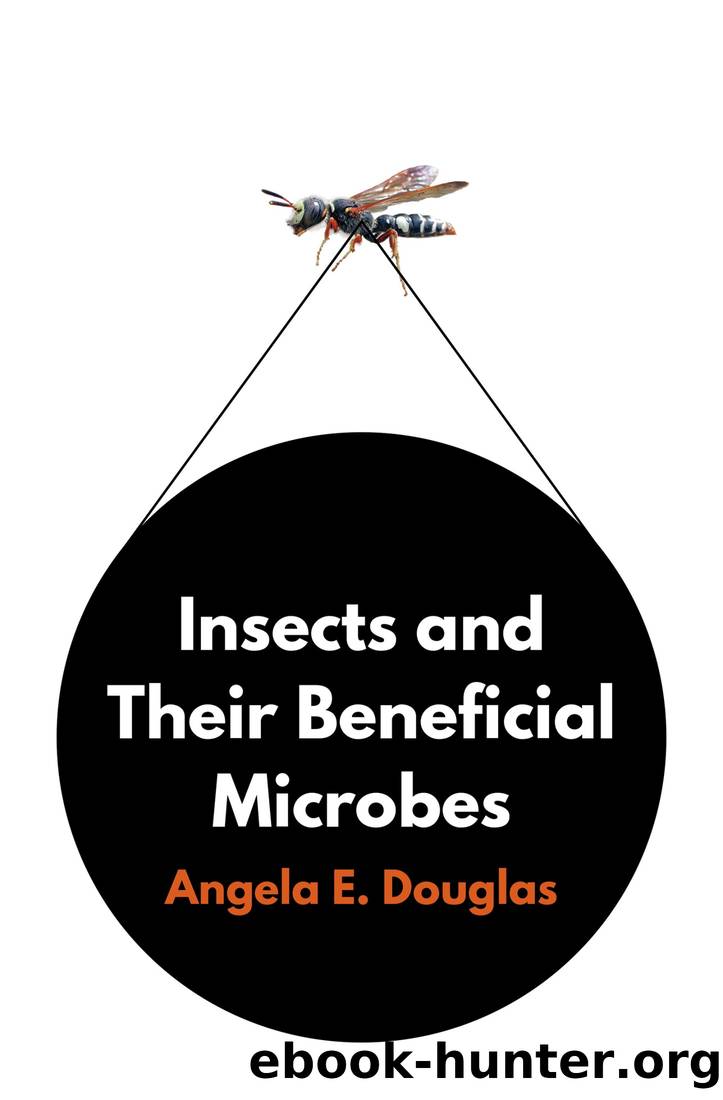Insects and Their Beneficial Microbes by Angela E. Douglas;

Author:Angela E. Douglas; [Douglas;, Angela E.]
Language: eng
Format: epub
ISBN: 9780691192406
Publisher: Princeton UP
Published: 2022-03-30T00:00:00+00:00
Although microbial partners have been proposed to promote insect utilization of various plant tissues that are well defended by toxic secondary compounds, the evidence is generally fragmentary and contradictory. Exceptionally, strong evidence for microbial detoxification comes from the study of Ceja-Navarro et al. (2015) on the coffee berry borer Hypothenemus hampei (Coleoptera: Curculionidae of the subfamily Scolytinae), a devastating pest of coffee. The adult female drills into a coffee bean, where she deposits up to 50 eggs in the endosperm, and the offspring develop within the bean to adulthood, feeding on the caffeine-rich nutrient reserves. Degradation of otherwise toxic caffeine levels in the beans is mediated by gut bacteria, as demonstrated by the increased caffeine content of the frass of antibiotic-treated beetle larvae, and >10-fold reduction in fecundity of the antibiotic-treated insects relative to untreated insects. Various bacteria were isolated from the insect guts onto a medium with caffeine as the sole carbon and nitrogen source, including a strain of Pseudomonas fulva (γ-Proteobacteria: Pseudomonadaceae) that expressed a caffeine demethylase gene. Furthermore, antibiotic-treated beetles recovered the capacity for caffeine degradation when administered P. fulva. Intriguingly, the fecundity of the beetles reinfected with P. fulva did not recover, raising the possibility that gut bacteria other than P. fulva provide additional (possibly nutritional) services that are required by the insect.
FIGURE 4.13. Interactions between dietary terpenes and the gut microbiota of the pine weevil Hylobius abietis. A. Diterpene content of food ingested by individual adult weevils over 16 h and of the insect feces egested over the following 24 h. Each weevil was starved for 4 days prior to the experiment and then fed on bark of Norway spruce. B. Diterpene content of feces collected over 24 h from adult weevils that had been fed for 14 days on artificial diet with ground Norway spruce bark. For the antibiotic-treated weevils, the diet was supplemented with 0.3% rifampicin over the 14 days. The reinfected weevils were maintained on the antibiotic-supplemented diet for 7 days, then administered gut bacteria and transferred to an antibiotic-free diet for 7 days. C. Fecundity of weevils over 30 days reared on artificial diet supplemented with antibiotic (0.3% rifampicin) and pine diterpenes (0.3% gum rosin). Eighty male and female pairs were used per treatment. Treatments with different letters (a, b) are significantly different. The inset graph displays the pattern of results predicted if microbial degradation of dietary terpenes promoted egg production by the weevils. D. Hypotheses of the relationship between dietary terpenes and microbiota effects on weevil performance. [A, B, and C redrawn from figs. 1a, 2, and 6b, respectively, of Berasategui et al. (2017).]
Download
This site does not store any files on its server. We only index and link to content provided by other sites. Please contact the content providers to delete copyright contents if any and email us, we'll remove relevant links or contents immediately.
| Cell Biology | Developmental Biology |
| Entomology | Marine Biology |
| Microbiology | Molecular Biology |
| Biostatistics |
Sapiens: A Brief History of Humankind by Yuval Noah Harari(13955)
The Tidewater Tales by John Barth(12383)
Mastermind: How to Think Like Sherlock Holmes by Maria Konnikova(6914)
Do No Harm Stories of Life, Death and Brain Surgery by Henry Marsh(6673)
The Thirst by Nesbo Jo(6422)
Why We Sleep: Unlocking the Power of Sleep and Dreams by Matthew Walker(6327)
Life 3.0: Being Human in the Age of Artificial Intelligence by Tegmark Max(5167)
Sapiens by Yuval Noah Harari(5110)
The Longevity Diet by Valter Longo(4847)
The Body: A Guide for Occupants by Bill Bryson(4560)
The Rules Do Not Apply by Ariel Levy(4505)
The Immortal Life of Henrietta Lacks by Rebecca Skloot(4237)
Why We Sleep by Matthew Walker(4186)
Animal Frequency by Melissa Alvarez(4139)
Yoga Anatomy by Kaminoff Leslie(4096)
The Hacking of the American Mind by Robert H. Lustig(4069)
All Creatures Great and Small by James Herriot(3970)
Barron's AP Biology by Goldberg M.S. Deborah T(3933)
Double Down (Diary of a Wimpy Kid Book 11) by Jeff Kinney(3903)
